Space
Sign up for our newsletter
We summarize the week's scientific breakthroughs every Thursday.
-
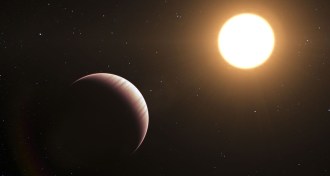 Astronomy
AstronomyExoplanet water seen in new light
Astronomers used a new technique to characterize the atmosphere of a gas giant exoplanet.
-
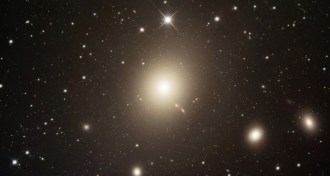 Astronomy
AstronomyStar cluster hurtles through space with tremendous speed
A compact ball of hundreds of thousands of stars has just shot out of the galaxy M87 at millions of kilometers per hour, astronomers report. It is the first hypervelocity globular cluster detected to date.
-
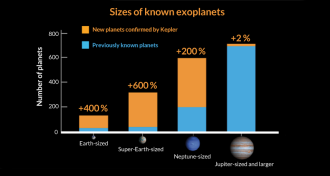 Astronomy
AstronomyKepler space telescope data uncovers 715 new planets
Astronomers used a new tool to quickly confirm the detection of exoplanets.
-
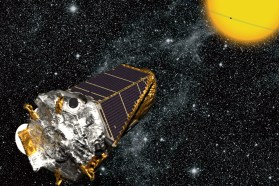 Astronomy
AstronomyKepler data confirm 715 new exoplanets
The population of planets outside the solar system has grown by about 70 percent, thanks to discoveries culled from Kepler space telescope data. Researchers are announcing 715 new confirmed planets in a February 26 press conference.
-
 Astronomy
AstronomyChina’s lunar rover alive, but still crippled
Mechanical issues are preventing the Yutu lunar rover from exploring the moon's surface as designed.
-
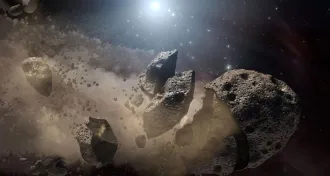 Astronomy
AstronomyPulsar pulverizes an asteroid
The steady beat of a pulsar may occasionally be interrupted by collisions with asteroids.
-
 Planetary Science
Planetary ScienceLunar asteroid impact caught on video
On September 11, a dishwasher-sized meteoroid slammed into the nearside of the moon, exploding with the equivalent of 16 tons of TNT — and a lucky team of Spanish astronomers caught it on video.
-
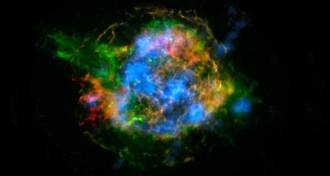 Astronomy
AstronomyWhile exploding, supernovas not spherical
X-rays reveal uneven allotment of element made by blowup.
By Andrew Grant -
 Quantum Physics
Quantum PhysicsEinstein was wrong about spooky quantum entanglement
Einstein’s biggest blunder wasn’t about vacuum energy in space, but in confusing people about quantum entanglement.
-
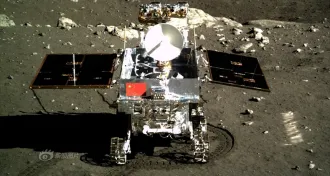 Astronomy
AstronomyChina’s lunar rover fails to connect with controllers (updated)
Yutu, or Jade Rabbit, could not be restored to full function, Chinese media report.
-
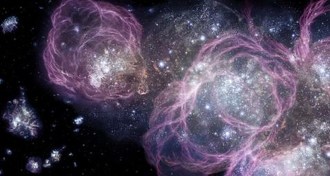 Astronomy
AstronomyOldest star provides hints about first supernovas
The chemical composition of star SMSS J031300.362670839.3 and four others suggests that the explosions of the early universe weren't big enough to seed galaxies with iron.
-
 Planetary Science
Planetary ScienceMoon like blue cheese?
The lunar surface turns out to have more grit than scientists thought.